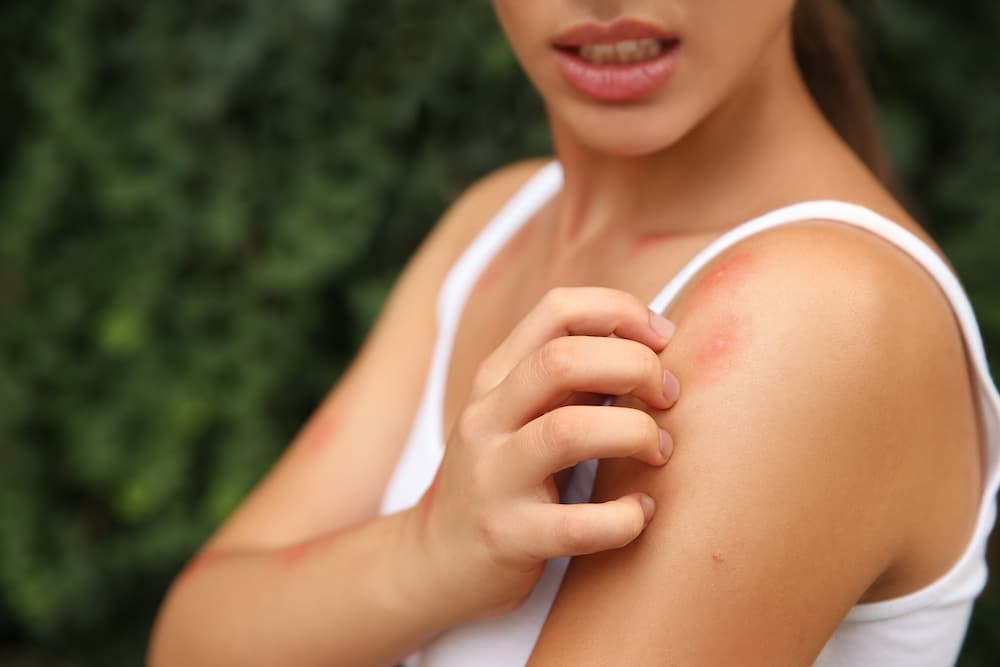Warm weather and outdoor adventures bring fun and sunshine—but also a greater chance of being bitten by bugs. From mosquitoes to ticks and everything in between, insect bites can result in skin irritations, allergic reactions, and, in some cases, more serious conditions.
Accurately identifying bug bites is crucial to understanding how to treat them and when to seek medical attention. Many mistake bug bites for rashes, skin allergies, or infections. You can better manage symptoms and avoid unnecessary discomfort with the proper knowledge.
Why Identifying Bug Bites Matters
Not all insect bites are created equal. Some are harmless and fade quickly; others may trigger allergic reactions or transmit diseases. Identifying bug bites can help you:
- Apply the appropriate treatment
- Monitor for signs of infection or illness
- Prevent future bites
- Know when to seek professional medical care
The sooner you can pinpoint what bit you, the more effectively you can respond and recover.
Common Types of Bug Bites and Their Reactions
1. Mosquito Bites
One of the most common bites people experience.
- Appearance: Small, round, puffy bump with a red dot in the center
- Symptoms: Itching, mild swelling
- How to identify: Usually appear shortly after outdoor exposure, especially in the evening
When identifying bug bites like these, look for isolated bites in exposed areas like arms and legs.
2. Tick Bites
Ticks latch on for extended periods and can transmit illnesses.
- Appearance: Small red bump, sometimes with the tick still attached
- Symptoms: Mild irritation, potential bullseye rash
- How to identify: Found in wooded or grassy areas
Ticks can carry Lyme disease, so identifying these bug bites early is critical.
3. Flea Bites
It can often be seen in pets, but humans are susceptible, too.
- Appearance: Small red spots in clusters, usually on ankles or legs
- Symptoms: Itching, irritation
- How to identify: Multiple bites in a line or group
Fleas often infest homes, so identifying bug bites quickly can help prevent larger infestations.
4. Spider Bites
Most spider bites are harmless, but some can be serious.
- Appearance: Red, swollen bump—sometimes with two puncture marks
- Symptoms: Pain, itching, and, in some cases, blistering
- How to identify: Can appear anywhere, sometimes with a visible necrotic center
Identifying bug bites from spiders can be tricky, but pain and swelling are usually stronger than with other insects.
5. Bedbug Bites
These happen at night and often go unnoticed until morning.
- Appearance: Red, itchy welts in zigzag or linear patterns
- Symptoms: Itching, rash
- How to identify: Bites on areas exposed during sleep (arms, face, neck)
Bedbug infestations can proliferate, so identifying bug bites early can prevent a bigger problem in your home.
Allergic Reactions vs. Normal Irritations
Sometimes, identifying bug bites is less about the bug itself and more about how your body reacts. Reactions can range from mild redness and itching to severe swelling and difficulty breathing. Watch for:
- Hives or widespread rash
- Intense swelling or pain
- Breathing difficulty or dizziness
If you experience any of these symptoms, seek immediate medical attention. In such cases, identifying bug bites can mean the difference between minor discomfort and a medical emergency.
Treating Bug Bites at Home
Once you’ve succeeded in identifying bug bites, you can often treat them at home with the following:
- Cold compresses to reduce swelling
- Topical creams like hydrocortisone for itching
- Oral antihistamines for allergic responses
- Antibiotic ointments if the skin is broken
Avoid scratching, as it can lead to infection. If symptoms persist for over a few days or the bite site worsens, it’s time to see a specialist.
Prevention Tips
While learning about identifying bug bites is helpful, preventing them altogether is even better:
- Use insect repellent
- Wear long sleeves and pants in wooded areas
- Avoid stagnant water (mosquito breeding grounds)
- Regularly check for ticks after hikes or outdoor play
- Take steps to protect your home from bed bugs and fleas
Prevention and vigilance go hand in hand with proper care and awareness.
When to See an Allergy Specialist
Sometimes, identifying bug bites isn’t enough. If you’re experiencing repeated bites with severe reactions, it may indicate an underlying allergy or immune response. That’s where a professional can help. At McGovern Allergy & Asthma Clinic, their board-certified allergists specialize in evaluating skin reactions, including those caused by insect bites and environmental allergens. Whether you’re unsure about what bit you or suspect a more serious allergic condition, their team can provide testing, diagnosis, and customized treatment plans.
Identifying bug bites is more than just a summer survival skill—it’s critical to managing your health and comfort during outdoor activities. You can stay safe and itch-free all season by recognizing different bite patterns, understanding your body’s responses, and knowing when to get help.
For expert evaluation and care, especially if you’re dealing with recurring or severe reactions, contact McGovern Allergy & Asthma Clinic—where comfort and safety come first!

